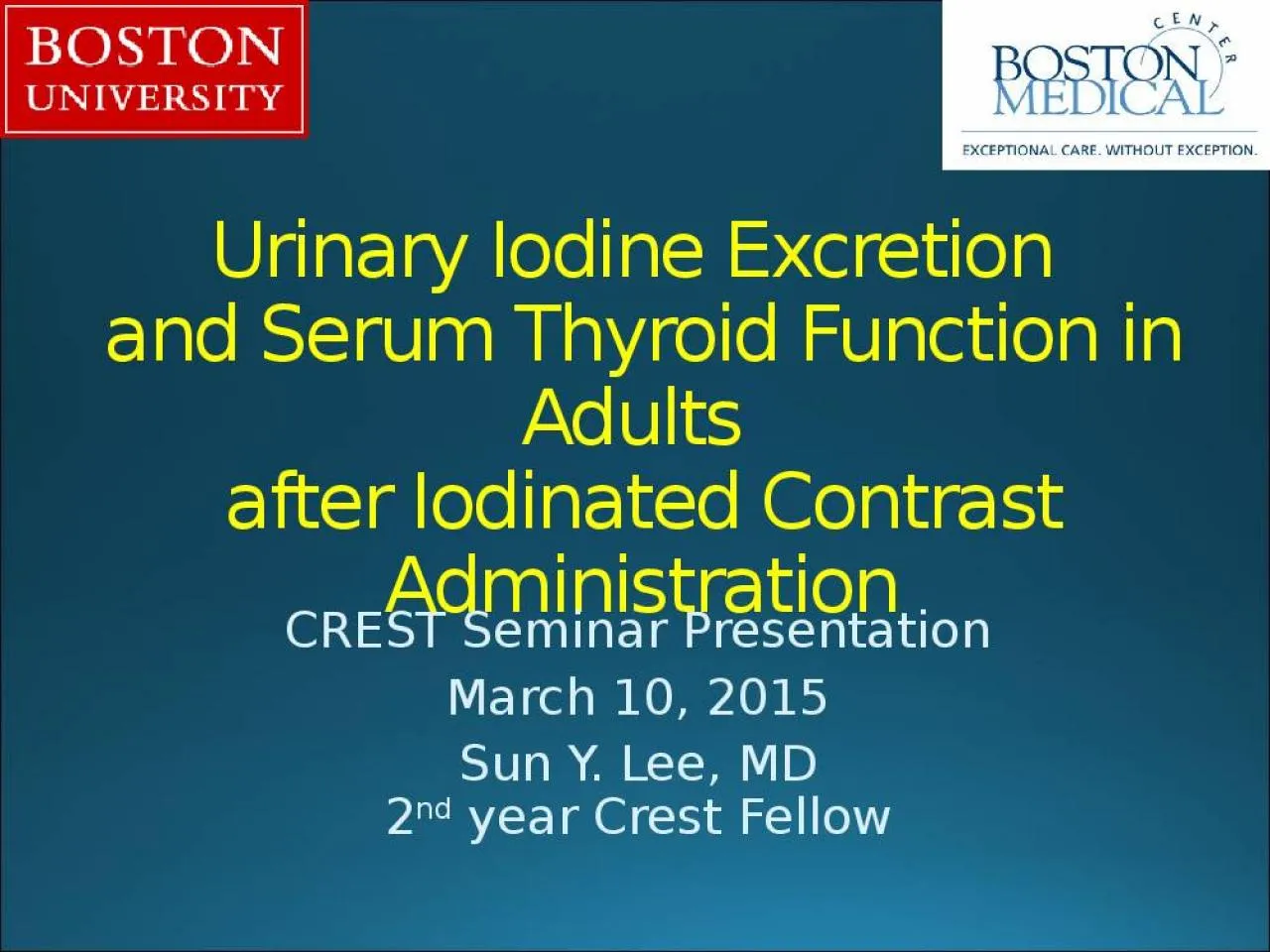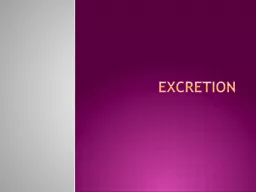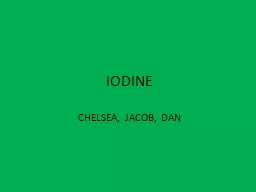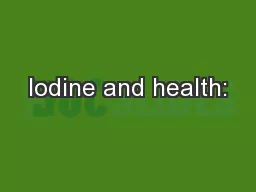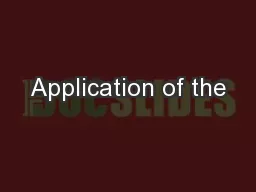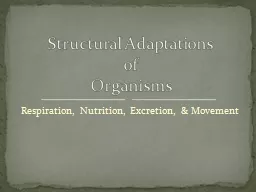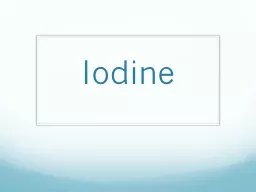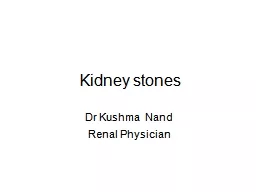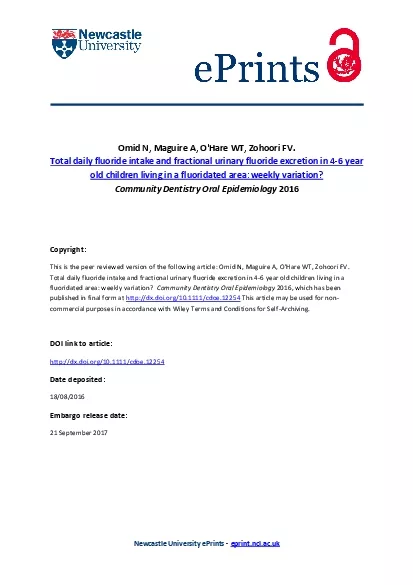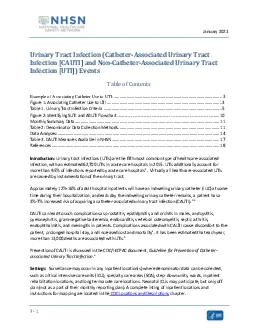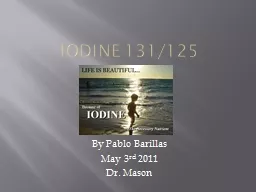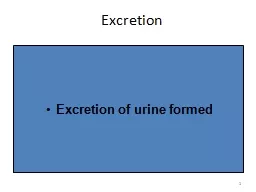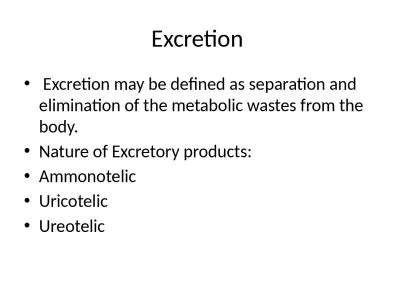PPT-Urinary Iodine Excretion
Author : kylie | Published Date : 2022-05-17
and Serum Thyroid Function in Adults after Iodinated Contrast Administration CREST Seminar Presentation March 10 2015 Sun Y Lee MD 2 nd year Crest Fellow Overview
Presentation Embed Code
Download Presentation
Download Presentation The PPT/PDF document "Urinary Iodine Excretion" is the property of its rightful owner. Permission is granted to download and print the materials on this website for personal, non-commercial use only, and to display it on your personal computer provided you do not modify the materials and that you retain all copyright notices contained in the materials. By downloading content from our website, you accept the terms of this agreement.
Urinary Iodine Excretion: Transcript
Download Rules Of Document
"Urinary Iodine Excretion"The content belongs to its owner. You may download and print it for personal use, without modification, and keep all copyright notices. By downloading, you agree to these terms.
Related Documents

